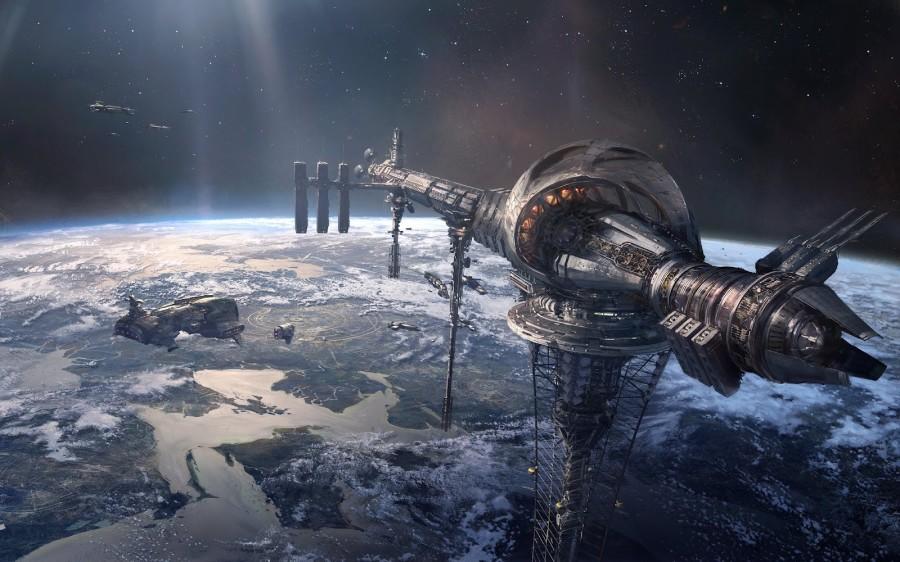The Rush for Cities in Space
Photo courtesy of extremetech.com
Artist’s depiction of a space elevator
June 14, 2014
Tensions in recent months between Russia and the United States about Ukraine have severed relations. These global politics have impacted our space program. Russian Deputy Prime Minister Dmitry Rogozin announced that U.S. astronauts may not have full access to the International Space Station as before. Since NASA relinquished its space shuttle program, it was assumed that the focus was aimed primarily on the space station, but now that is not the case. Fifty years ago, the United States was hoping to travel into space and land on the moon. Now, the United States is looking past the moon and is making great strides towards building cities in space.
Instead of just space and scientific exploration, a grand space colony is more achievable in many ways. The first possible scenario can be to terraform nearby planets like Mars or the moon through creating bio-dome cities and other large geo-engineering projects. Another idea is to create a central government region of space and enlarge around it gradually with commercial and residential development. The free space model is the final proposition, as a concept of floating cylinders using the resources from space.
Of course there are challenges to overcome such as how to become self-sustaining space city. On the moon, helium is a plentiful potential fuel source that is not common on Earth. Biosphere projects have run into problems maintaining consistent oxygen and carbon dioxide levels and maintaining functioning ecosystems overall.
Another challenge is how the human body would react in deep space. Our human physiology is greatly affected in zero gravity. Cerebral fluid floats upward, affecting our eyes. Bone density and muscle mass drops. Calcium depletes through urine due to long periods in space. Radiation shielding and walls have to be created and is a continuous multimillion-dollar NASA project involving various forms of pharmaceutical research. The Director of NASA’s space life and physical science division heads his team, hoping the solution will come by 2024.
Colonizing on the moon is a better choice than a distant planet. But how do we get ourselves there? For example, if a Cherry Hill high school student may want to do a summer science internship on the moon, rather than getting in a rocket, he or she can take a space elevator. As of 2010, graphene, a one-atom-thick sheet of pure carbon that can be one hundred times stronger than steel, can be used for cable material. This cable can anchor an elevator to the equator and shoot it up using the tension centrifugal force shooting the elevator up. Think of the ride Kingda Ka at Six Flags Great Adventure, but a thousand times faster.
Space operations around the world is not just through NASA and the United States Government, but through a group of private companies collectively known as NewSpace. Robert Bigelow, the Budget Suites Hotel owner, will be sending inflatable habitat modules up to the International Space Station in 2015. The goal is to lease out spaces like hotel suites and laboratories. The mining company Deep Space Industries is working on providing air and water for space settlements.
Why are humans in such a rush to colonize outside of Earth? At the recent Human to Mars conference in Washington D.C., NASA Chief Charles Bolden boldly stated, “we are, right now, an Earth-reliant species, but only multi-planet species survive for a long period of time.”
Many different sectors, including the government and private companies, are setting an optimistic goal for a space colony by 2024 because they believe we have to for human existence.







